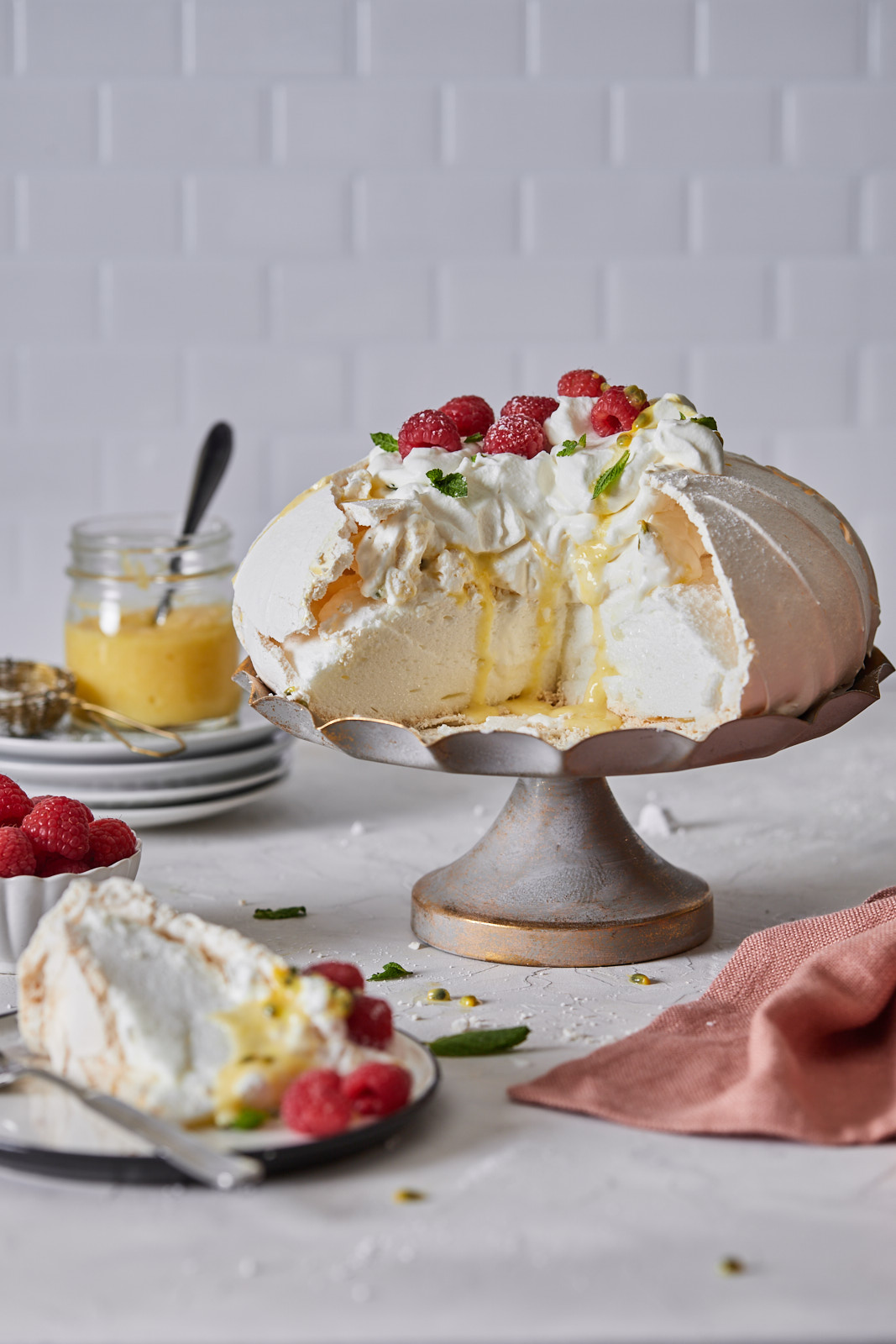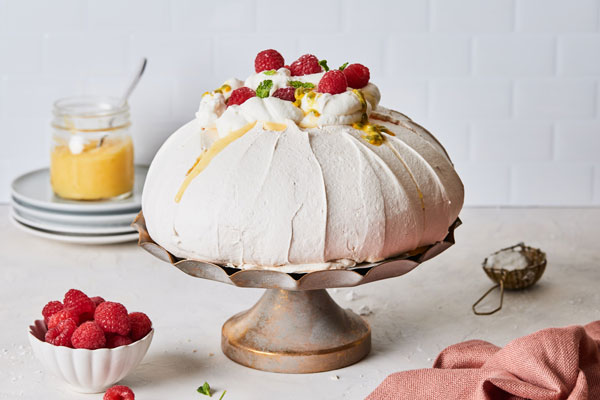Classic Pavlova
A classic pavlova is a fabulous dessert with a crisp meringue shell and soft, marshmallowy centre. It’s irresistible loaded with a little curd, pillowy fresh whipped cream and seasonal fruit. It’s simpler to make than most realize and I thought I would share a few tips I have learned along the way.
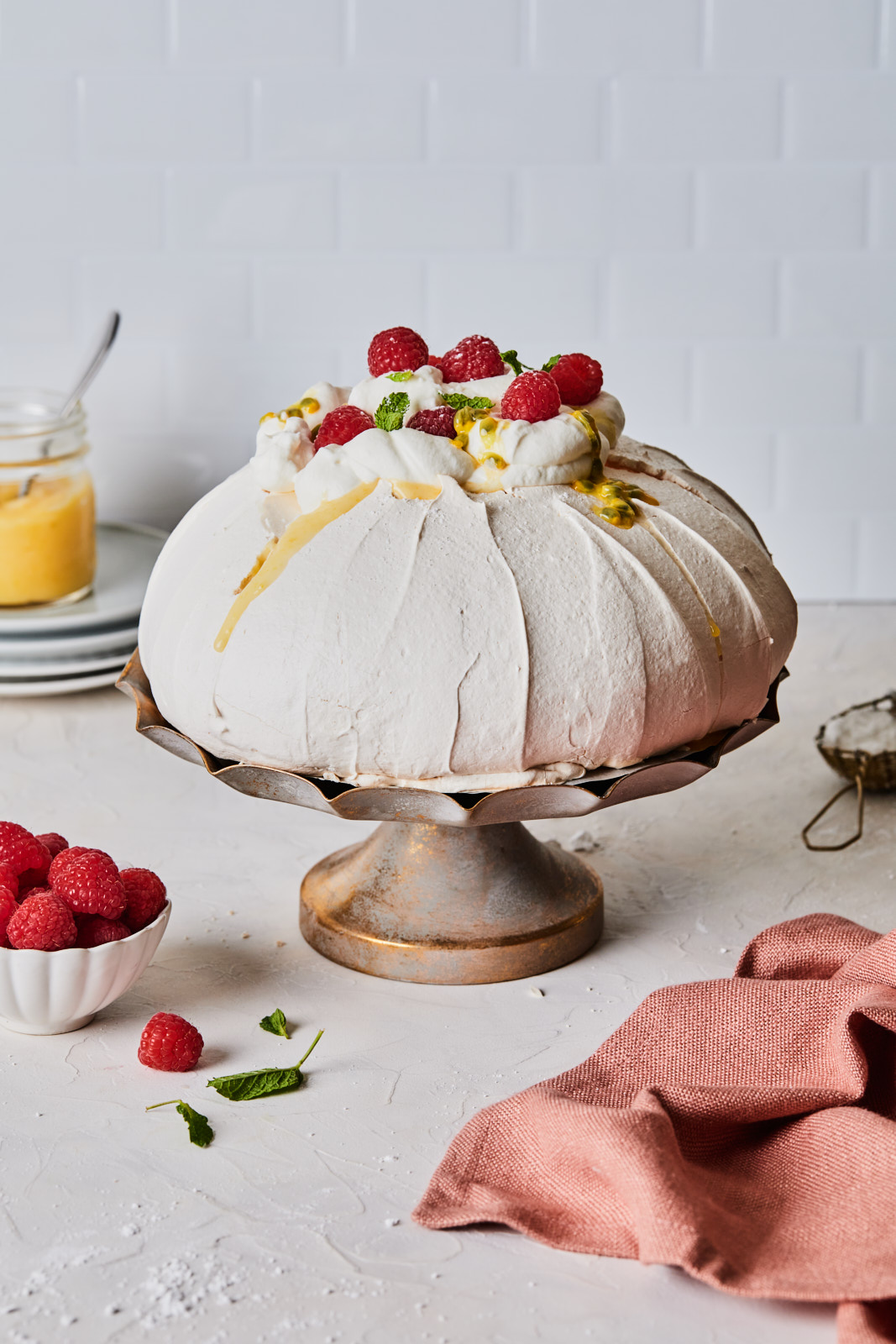
Tips to help make a perfect pavlova:
• Use a clean and dry bowl to whisk the eggs in. Any bit of residue or moisture in the bowl could compromise the mix.
• Use fresh eggs or as fresh as possible. Ensure they are room temperature. And separate carefully to make sure no part of the yolk mixes in with the egg whites. The leftover egg yolks are perfect for making my lemon curd or any citrus curd which is the perfect way to top this pavlova with.
• Use super fine castor sugar which dissolves more easily. If you don’t have caster sugar just use regular granulated sugar and blitz it in a food processor for a few seconds. Beat in the caster sugar gradually. If you add it all at once the mixture may deflate and you risk overbeating to dissolve it. To test if the sugar is dissolved, rub some mixture between your fingers. If it feels grainy, keep beating until the mixture feels smooth and looks glossy. If you add the sugar too fast your meringue will not get enough volume and become stiff. If your sugar has not dissolved after adding it all keep whisking until all grains are dissolved
• Humidity or moisture is the enemy for pavlovas so try to bake it in a dry environment, meaning try not to boil water for pasta or put the kettle on while making it and try to bake it on a a day that isn’t too humid. It’s not a great bake up on a rainy day.
• To prevent a weepy pavlova or beads on the surface of your meringue, make sure all the sugar has completely dissolved, being careful not to overbeat. As overbeating can cause your pavlova to crack and collapse during baking.
• Help avoid too many cracks by cooling the pavlova in the oven. The sudden change of temperature shocks the pavlova. Do not open the oven during the baking process. I usually plan on making it the night before I serve it and leave it in the oven until I’m ready to serve it.
• If you want to add vanilla to your pavlova add a maximum of 1 tsp. Adding vanilla can change the colour of the meringue so be mindful of that and if the vanilla extract has water, adding further moisture can also cause the pavlova to weep.
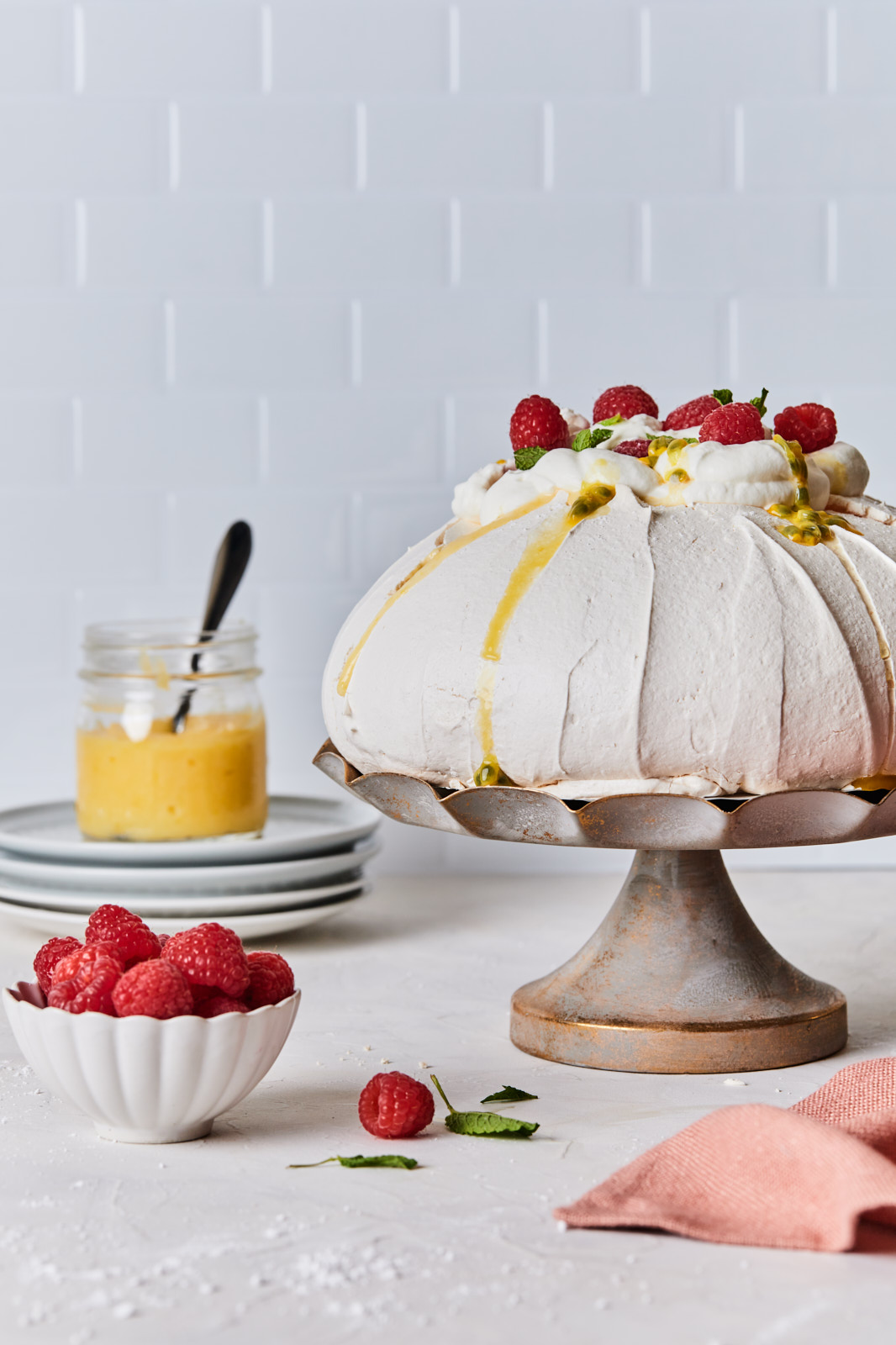
Should I be overly worried about cracks?
Short answer is NO! Small Cracks and bumps on the pavlova are very normal but the pavlova shouldn’t completely deflate when you take it out of the oven or transfer it to plate. It may start to collapse after the toppings have settled and that is normal. That is why I always place the toppings on right before I serve. The toppings add weight and moisture to the pavlova so it’s normal that it will crack with the weight of them and while serving.
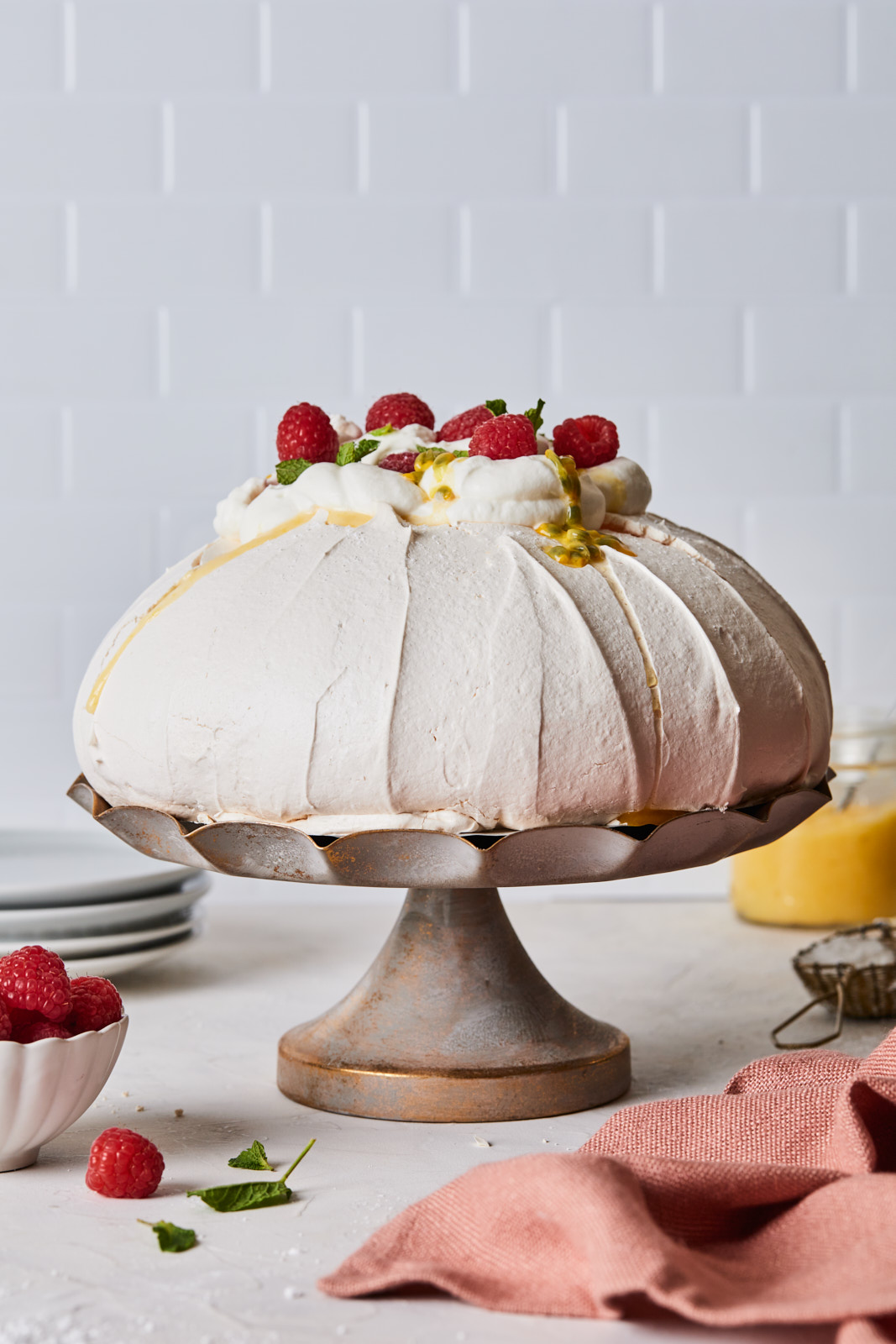
These little tips will help ensure you get a delicious pavlova every time! Top it with your favorite curd, (I love my simple lemon curd which is the perfect use of the leftover yolks from making the pavlova) whipped cream (I love my stabilized whip), and fresh seasonal fruit. It’s gorgeous, gluten free and delicious!
Recipe
Servings: 8-10 servings
Prep Time: 15-20 mins
Bake Time: 1 hr 30 mins
Total time: 30-35 mins
Ingredients
For the pavlova
- 6 egg whites approx 225ML (Reserve yolks for lemon curd)
- 1½ cups caster (superfine) sugar
- 1½ tsps white vinegar
For the whipped cream
- 1½ cups of Heavy Cream
- 1 Tsp vanilla extract
- ¼ cup of powdered sugar
For the toppings
- 1 cup fresh raspberries
- ½ cup of lemon curd
- Powdered sugar for dusting
- Mint for garnish
Directions
- Preheat oven to 300°F. Place egg whites in a bowl of an electric mixer and whisk on medium speed until soft to stiff peaks form.
- Gradually add the sugar, 1 tablespoon at a time, waiting 30 seconds between each addition. Once you have added all the sugar, scrape down the sides of the bowl with a spatula and whisk for a further 6 minutes or until the mixture is stiff and glossy.
- Add the vinegar and whisk again for 4 minutes or until glossy and combined.
- Line a baking sheet with parchment paper and pile spoonfuls of the meringue onto a baking tray lined with non-stick baking paper and, using a spatula, shape to form a 9 inch circle. Reduce the oven temperature to 250°F and bake for 1 hour 30 minutes or until dry and crisp to the touch.
- Turn the oven off and allow the pavlova to cool completely in the oven. Place the cream in a bowl and whisk until soft peaks form.
- Place the pavlova on a serving plate or cake stand and top with the lemon curd if using and then the cream, and raspberries. Dust with icing sugar to serve and garnish with fresh mint.
Recipe notes
-
Adding cornstarch to the meringue is common to help with the texture of the interior of the pavlova - a nicer marshmallow texture. But there’s a fine line between chewy marshmallow and chalky so I wouldn’t add more that 2 tbsp in a pavlova with 6 egg whites.
-
If you are adding vanilla extract to the mix add no more than 1 tsp and add it with the vinegar.
